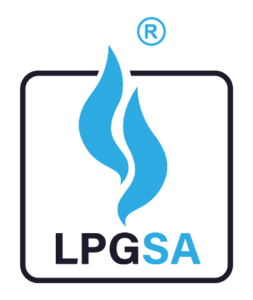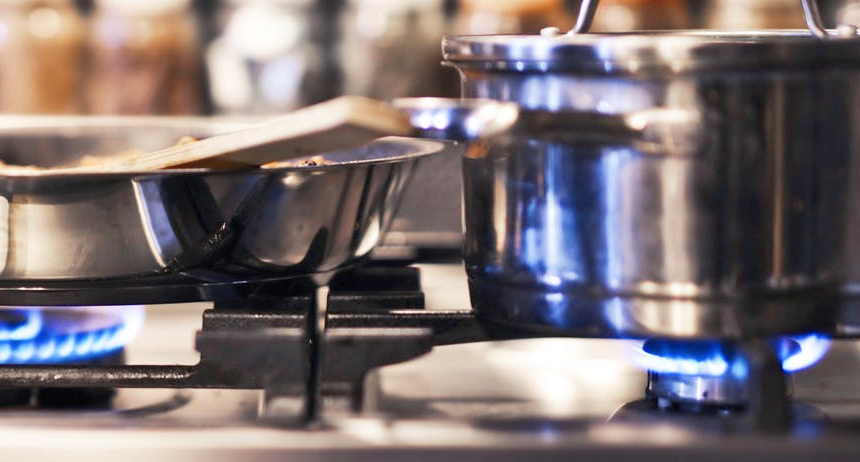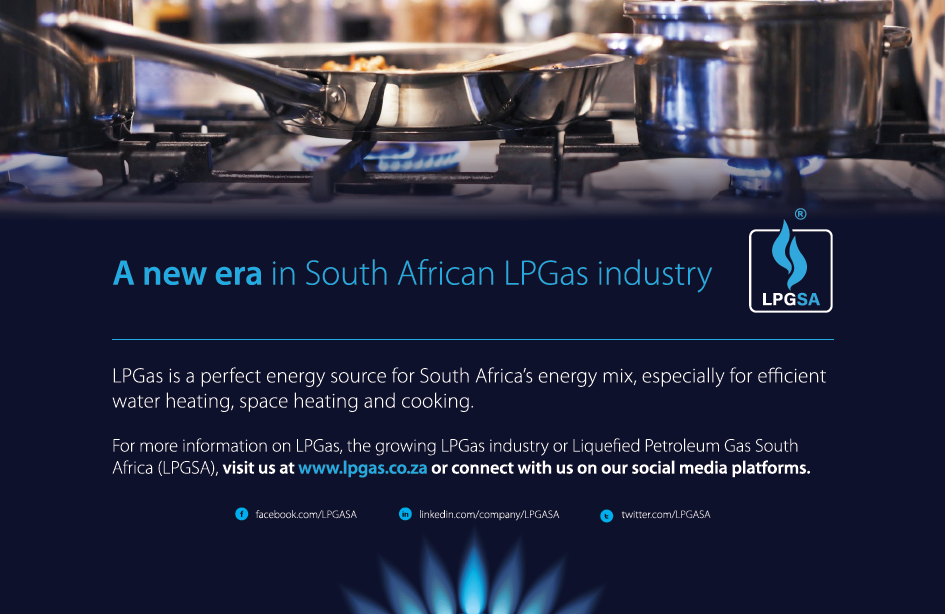(Johannesburg, 28 July 2020): The Liquefied Petroleum Gas Safety Association of South Africa announced its new name: The Liquefied Petroleum Gas Association of South Africa (LPGSA) on 20 July 2020.
The name change reflects a strategic shift to broaden LPGSA’s mandate to not only promote the safe, compliant use of LPG but to advocate for LPG’s exceptional benefits in comparison to other energies in South Africa. LPG is an exceptional energy, a portable energy solution which is an efficient and clean burning fuel that can contribute to alleviate energy poverty as well as help reduce indoor and outdoor air pollution.
 Safety will remain a core focus of LPGSA’s work, and the LPGSA will continue to run training courses and certify installers, manufacturers and distributors of LPG and LPG equipment.
Safety will remain a core focus of LPGSA’s work, and the LPGSA will continue to run training courses and certify installers, manufacturers and distributors of LPG and LPG equipment.
Over the last month and in line with the association’s mandate, LPGSA implemented a media outreach campaign to educate homeowners and communities across the country who use LPG roll-about heaters, patio heaters or fireplaces about the need to ensure the safety of their gas equipment as well as the cylinders they use.
“It is extremely important that you make use of registered professionals to perform the installation and maintenance of LPG appliances and cylinders,” says Nirvan Brijlal, Acting Managing Director of LPGSA.
Used in accordance with safety guidelines, LPG is a clean, reliable alternative to other fuels. The following tips will ensure that you are able to use your appliance safely and effectively this winter.
General safety tips
- Always consult the manual that came with the appliance for specific safety tips.
- Keep LPG appliances and fittings in good condition via regular servicing.
- LPG appliances should be serviced by licensed LPG installers or service companies only.
- Check your appliances regularly for deterioration in performance, signs of corrosion and minor leaks.
- Make sure that the area in which you use your LPG appliance is well-ventilated.
- Do not detach cylinders, regulators or any connections while the LPG appliance is in use.
- Do not leave appliances unattended while in use.
- Ensure that the gas supply is turned off at the cylinder after use and while the appliance is unattended.
Refilling your LPG cylinder:
- Check that your gas cylinder is correctly filled or exchanged in good time
- When exchanging your empty cylinder for a filled one, make sure that your replacement cylinder has been legally and safely filled by checking that there is a shrink wrap seal covering the cylinder valve.
- Do not accept the cylinder if there is no seal or if the seal is clear with no writing or branding.
- If the seal only has the words LPG or LPGas printed on it, do not accept the cylinder – even if the seal is a coloured one.
- The only acceptable seal is one that has the same branding on the seal as is on the body of the cylinder.
Connecting your new cylinder
- Always make sure you are working in a well-ventilated area.
- Roll-about heaters are connected to the LPG cylinder via an orange hose and a regulator – the regulator screws into the cylinder valve.
- Always ensure that the cylinder valve is closed before loosening/removing the regulator.
- Check that there is a rubber seal on the end of the regulator. The rubber seal is also referred to as a bullnose, O-ring or washer, and is the seal between the regulator and the cylinder valve.
- Ensure that the rubber seal is located on the end of the regulator and is in good condition and not perished, cracked or damaged in any way. The seals can become brittle over time, may split or even become lodged inside the valve of the LPG cylinder.
- A damaged seal is a prime cause of gas leaks. Seals should be checked regularly.
- Remember, the regulator has a left-hand thread. So, to connect the regulator, you need to turn it in an anti-clockwise direction. To remove the regulator, turn it clockwise.
Checking for gas leaks
- Once you have connected the regulator to the cylinder valve, open the valve one and a half turns only – it is not necessary to open it further.
- Before igniting the heater, wait a half a minute or so to see if there is any smell of gas.
- If there is a smell, immediately close the valve and take the cylinder and heater to an LPG dealer to check and, if necessary, service the heater.
- You can also check for a leak by applying a soapy water solution on all joints. The soapy solution will create bubbles if the gas is leaking.
- Once you have checked for leaks you should lift the gas cylinder into the housing behind the LPG heater and close the housing panel or backing plate.
- It is important that the LPG cylinder is in the space at the back of the heater to prevent the cylinder being knocked over.
- Make sure you use the correct size of cylinder for the heater you are using.
- Once the cylinder is safely in place and there is no combustible material (e.g. Curtains, blankets, doily) close to or on top of the heater, ignite the heater.



